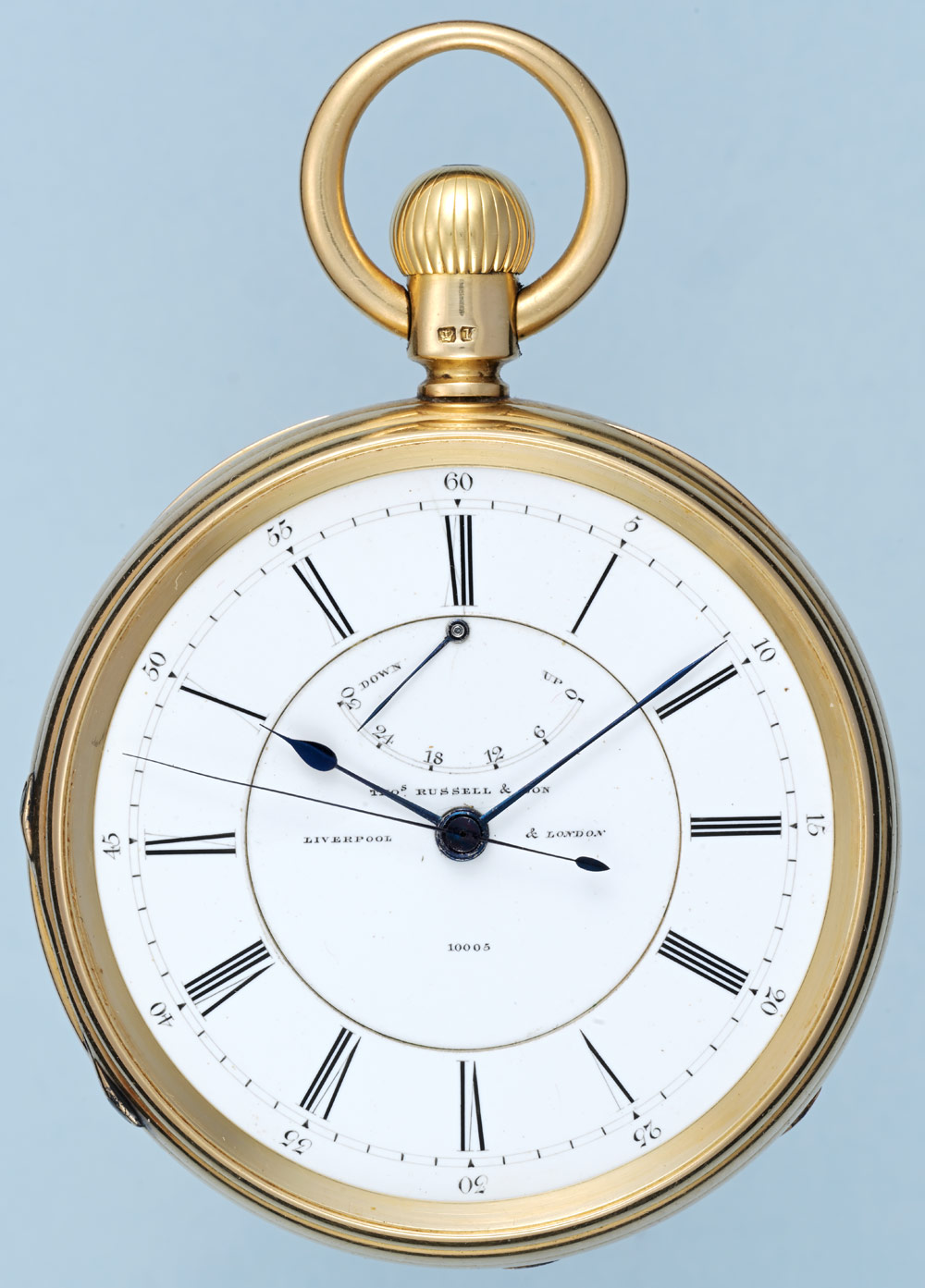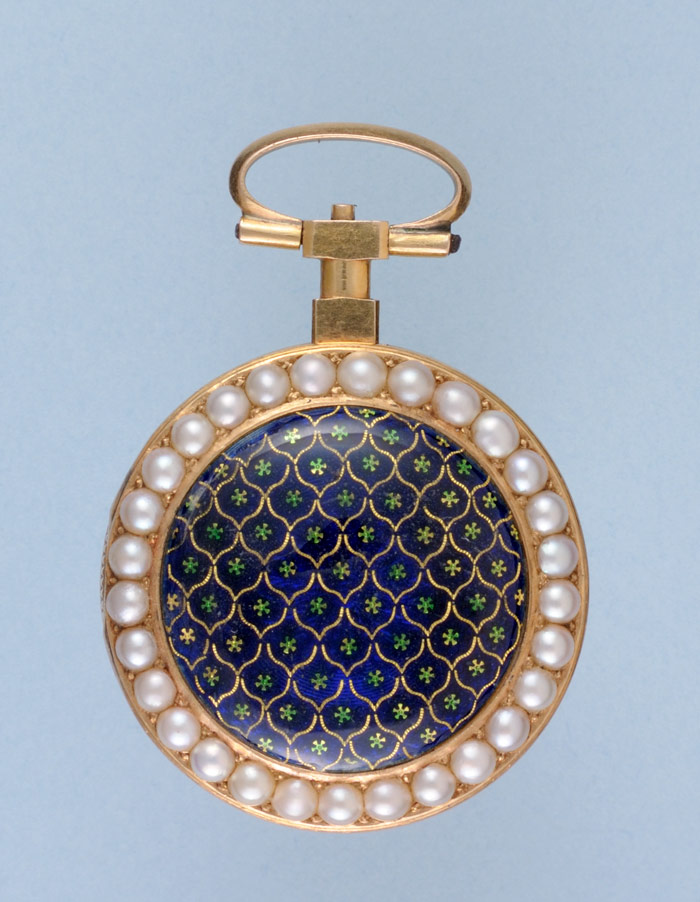Description
A fine late 19th Century English freesprung centre seconds keyless reverse fusee with power reserve indication by Kullberg in a gold open face case. Gilt three quarter plate centre seconds keyless movement with reverse fusee and chain. Harrison’s maintaining power. Unusual plain skeletonised bridge cock with diamond endstone in a blue steel setting. Compensation balance with freesprung blue steel overcoil hairspring. English double roller lever escapement, screwed in jewelling, escape and lever pivots with endstones set in a circular bridge. The centre seconds pinion also with an endstone. Signed and numbered white enamel dial with centre seconds, sector below twelve for 30 hour power reserve indication. Roman numerals, blue steel hands. Substantial plain 18 carat open face case, maker’s mark “JM” in an oval. Small gold hand set button under the back cover. Plain gold cuvette with apertures for winding and set by key if desired. Accompanied by a small morocco covered case with 9 carat gold repousse mask hallmarked Birmingham 1901. Easel stand for use as a desk clock.
A fine example of English watchmaking in excellent overall condition. The English trade resisted abandoning the advantages of a fusee. In an attempt to compete with Swiss and American watches they introduced keyless winding mechanisms to fusees of varying complexities. In addition to signing his own watches Kullberg also supplied high quality movements to discerning retailers of the period. This example has the layout he often favoured with an unusual bridge cock resembling those found on tourbillion watches. He almost always used the reverse fusee configuration which theoretically reduces wear to the fusee arbor. Casemaker John Martin, 47 Gerrard Street, Islington. Kullberg's workbooks show this watch to have been started on 15 November 1878 and delivered 17 November 1882. The entry for the case is particularly interesting, specified as an O F (Open Face) Crystal it was returned from Martin on 17 November 1880. The price paid for the case was ?9 12s 6d. The total for all outworkers was about ?21. The hallmark date letter was in use from May 1878 to May 1789 showing the case was in progress at least 18 months before delivery. The watch appears to have remained in Kullberg's stock, complete but unfinished from November 1880 until September 1882. During that month the endstone to the centre seconds pivot was fitted and the movement engraved for Russells with their serial number, 10005. An interesting insight into the English watch trade of the period.











